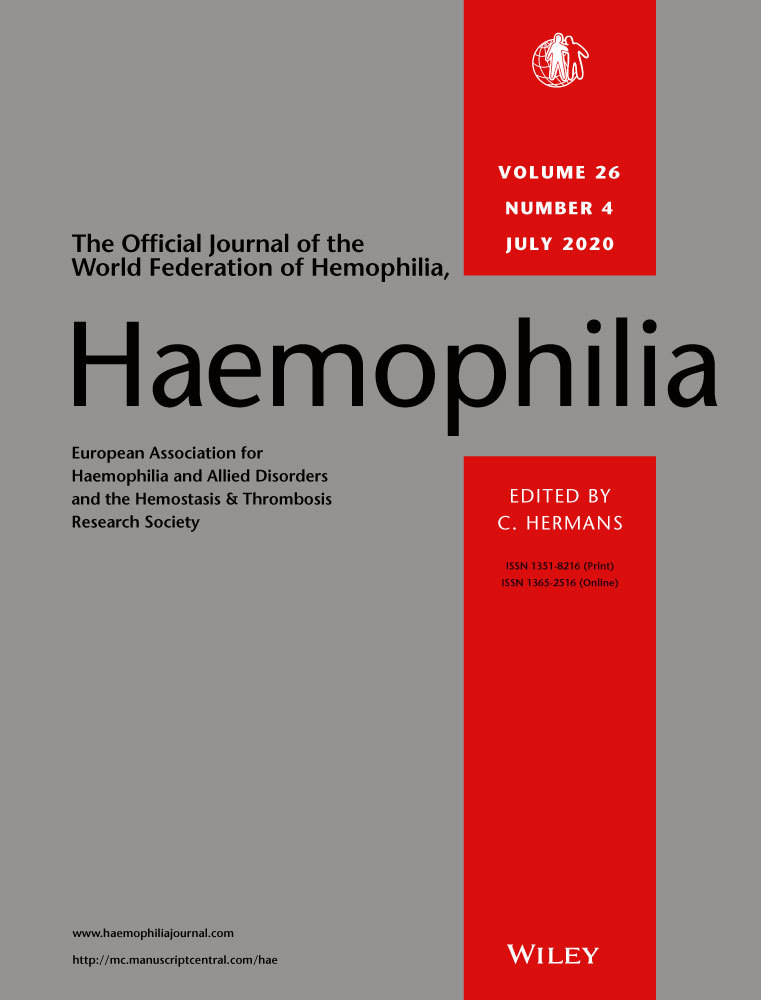Real-world analysis of haemophilia patients in China: A single centre's experience
Funding information
This project was supported in part by CAMS Innovation Fund for Medical Sciences (2017-I2M-3-018, 2016-I2M-1-002)and National Key Research and Development Program of China (2016YFC0901503). The authors thank Prof. Man-Chiu Poon (University of Calgary, Canada) for critically reviewing the manuscript. Editorial assistance was provided by Dr Gloria DeWalt (Analysis Group, Boston, USA).
Abstract
Introduction
The management of haemophilia is critical to minimize the risk of disability and reduce the burden on China's healthcare system.
Aim
This study was based on a single centre in China and was conducted to understand the evolution of real-world haemophilia care over the past 15 years.
Methods
We retrospectively analysed clinical characteristics, diagnosis, treatment and medical expenditures of 428 patients with haemophilia from January 2004 to December 2018 from the Institute of Hematology & Blood Diseases Hospital in Tianjin, China.
Results
The delayed diagnosis time significantly decreased from 13.3 ± 5.1 years before 2004 to 0.4 ± 0.4 year in 2014-2018 (P < .05). Among children and adults receiving prophylactic treatment, the annual factor consumption increased from 2004-2008 (168.8 IU/kg in children and 120.7 IU/kg in adults) to 2009-2013 (389.2 IU/kg in children and 316.2 IU/kg in adults) and 2014-2018 (1328.0 IU/kg in children and 878.8 IU/kg in adults, P < .001). The annual medical insurance expenditure for haemophilia had increased steadily over the past 10 years. The number of patients tested regularly for inhibitors increased from 2004 (1.9% [2/105]) to 2018 (21.5% [59/275]). The seroprevalence of hepatitis C virus (HCV) was 33.8% during the years examined, while the incidence rates of HCV among patients significantly decreased (7.3% in 2008 to 0.4% in 2018).
Conclusion
Significant improvements in the management of haemophilia were observed from 2004 to 2018. These results highlight the joint effort of the reimbursement policy and drug regulatory management paving the way for a better future for patients with haemophilia in China.
CONFLICT OF INTEREST
Renchi Yang has received speaker/consultancy fees from Bayer, Novo Nordisk, Pfizer, Roche and Takeda. The remaining authors have no disclosures to report.




